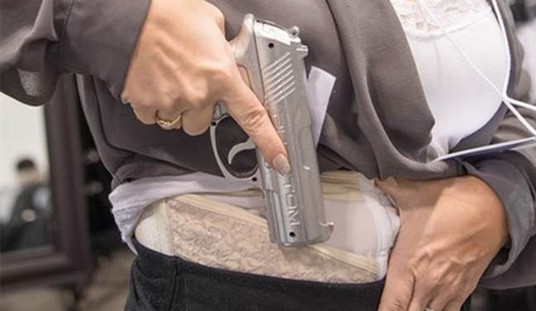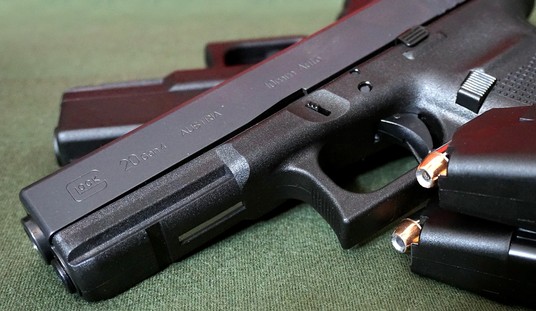
A medical device—apparently developed by Cyberdyne Systems—disarmed an off-duty police officer, took possession of the weapon, fired it, and refused to let it go until it’s power was, um, terminated.
Don’t freak out just yet, however: there’s a very scientific explanation for everything:
An off-duty police officer went to an outpatient imaging center (not affiliated with our institution) in western New York State to have an MR imaging examination. The facility housed a 1.5-T MR unit (Signa; General Electric Medical Systems, Milwaukee, WI) with active shielding. The officer was carrying a model 1991 A-1 compact.45 caliber semiautomatic pistol (Colt’s Manufacturing, Hartford, CT).
The officer notified the technologist that he was carrying the weapon before entering the MR dressing room. The technologist told the officer to take the gun with him. The technologist intended to meet the officer in the MR patient waiting area before the examination and secure the weapon in that room, where he felt it would be safe. However, the officer apparently misunderstood and took the gun into the MR suite. The technologist was entering the officer’s personal data into the computer and did not see him entering the MR suite.
Once the officer was inside the MR suite, the gun was pulled from his hand as he attempted to place the gun on top of a cabinet 3 ft (0.9 m) away from the magnet bore. The gun was immediately pulled into the bore, where it struck the left side and spontaneously discharged a round into the wall of the room at the rear of the magnet. Fortunately, no one was injured. Although the gun struck the magnet bore, only minimal cosmetic damage occurred to the magnet itself. The MR unit had full functional capability immediately after the gun discharged. The weapon’s thumb safety was reportedly engaged when the gun discharged.
An unsuccessful attempt to remove the gun from the magnet resulted in the gun being pulled to the right side of the magnet. The decision was then made to power down the magnet to remove the gun.
Yes, not only did the rogue magnetic resonance imaging (MRI) scanner disarm the officer, it craftily got around the problem of not having thumbs to disengage the thumb safety, and managed to fire the 1991 with the thumb safety engaged.
When the firearm was removed from the magnet, the gun was still in a cocked and locked position. An empty cartridge was found in the chamber. The presence of an empty cartridge in the chamber is highly unusual. If the thumb safety were not engaged and the weapon fired normally by depressing the trigger, the normal backward recoil of the slide should have automatically ejected the empty cartridge, and a new live round should have automatically been chambered. As discussed earlier, the thumb safety performs two functions: it prevents the sear from releasing the hammer, thereby preventing the hammer from striking the firing pin; it also locks the slide in place, preventing retrograde motion of the slide and automatic ejection of the empty cartridge. Thus, the presence of an empty cartridge in the chamber confirms that the thumb safety was engaged at the time the gun was fired. Given that the thumb safety was engaged when the gun discharged, it is also likely that the normal trigger and hammer mechanism of firing the gun was bypassed because the thumb safety would have also prevented release of the hammer.
The gun likely discharged as a result of the effect of the magnetic field on the firing pin block. The firing pin block was probably drawn into its uppermost position by force of the magnetic field. The firing pin block has to overcome only light pressure from a relatively small spring to release the firing pin. The pistol was likely drawn into the magnetic field so that the muzzle struck the magnet’s bore first. With the firing pin allowed to move freely in its channel, the force of the impact on the muzzle end was sufficient to cause the firing pin to overcome its spring pressure and move forward to strike the primer of the chambered round.
This account explains how the weapon discharged when the thumb safety was engaged.
As a general rule of thumb, we think it is wise to be armed for self-defense purposes, but we’re of the opinion that leaving your gun at hope or locked securely in a safe in your car may be your better decision if you are having an MRI scan.
So here’s a parting question for you: does this count as a negligent discharge, an accidental discharge, both, or neither?








Join the conversation as a VIP Member